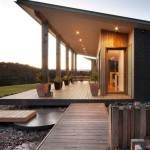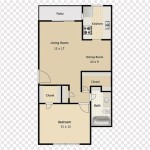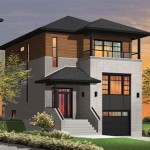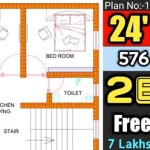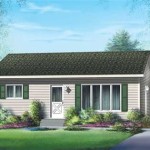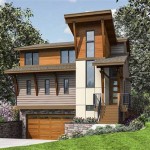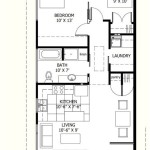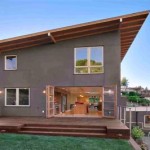In-Law Suite Floor Plans: Design Considerations and Practical Applications
In-law suites, also referred to as accessory dwelling units (ADUs), multigenerational living spaces, or granny flats, are self-contained living areas within a larger home or on the same property. These suites are designed to provide independent living space for family members, guests, or even renters while maintaining a degree of connection to the main house. Effective floor plans are paramount to achieving the desired balance of privacy, accessibility, and functionality. Planning involves careful consideration of spatial arrangement, accessibility, and building code compliance.
The increasing popularity of in-law suites reflects changing demographics and housing needs. Aging populations often prefer to live close to family for support and care. Young adults may return home after college or while saving for their own homes. In-law suites can provide a flexible and cost-effective solution for these diverse living arrangements. They can also be used to generate rental income, further offsetting the cost of construction or renovation. Therefore, a well-designed in-law suite adds value and versatility to a property.
When considering an in-law suite floor plan, key factors should be taken into account, including the target occupant, the available space, budget constraints, and local zoning regulations. The design should prioritize the needs of the intended occupants, whether they are elderly parents requiring accessibility features, young adults seeking independence, or tenants looking for a comfortable and private living space. The physical constraints of the existing property or the intended new construction will also influence the layout and size of the suite. A realistic budget determines the scope of the project and the materials that can be used. Finally, compliance with local zoning codes is crucial to ensure the legality and marketability of the in-law suite.
Key Point 1: Essential Components of an In-Law Suite Floor Plan
A successful in-law suite floor plan should incorporate several essential components, each designed to provide a comfortable and independent living experience. These components typically include a private entrance, a living area, a kitchen or kitchenette, a bedroom, and a bathroom.
A private entrance is crucial for maintaining a sense of independence and privacy. This entrance can be a separate door from the exterior of the house or a dedicated interior entrance that minimizes disruption to the main residence. The location of the entrance should be carefully considered to maximize privacy and minimize noise transmission.
The living area serves as a common space for relaxation, entertainment, and socializing. The size of the living area should be proportionate to the overall size of the suite and the needs of the occupants. Adequate natural light and ventilation are important considerations for creating a comfortable and inviting living space. Furniture arrangement should allow for easy movement and interaction.
A kitchen or kitchenette is essential for providing the occupants with the ability to prepare meals and maintain a degree of self-sufficiency. A full kitchen typically includes a range, oven, refrigerator, sink, and ample counter space. A kitchenette may be more compact, with a smaller refrigerator, microwave, and a sink. The choice between a full kitchen and a kitchenette will depend on the available space and the needs of the occupants. Ample storage space for food and cooking utensils is also important.
The bedroom should be a quiet and comfortable space for rest and relaxation. The size of the bedroom should be sufficient to accommodate a bed, nightstands, and a closet. Adequate lighting and ventilation are essential for creating a restful environment. The bedroom should be located away from noise-generating areas of the house to minimize disturbance.
The bathroom should include a toilet, sink, and shower or bathtub. Accessibility is a key consideration, especially for elderly or disabled occupants. Features such as grab bars, a walk-in shower, and a higher toilet seat can enhance safety and comfort. Adequate ventilation is important for preventing moisture buildup and mold growth. The layout of the bathroom should be designed to maximize space and functionality.
Beyond these core components, additional features may be incorporated into the in-law suite floor plan, depending on the available space and the needs of the occupants. These features may include a laundry area, a storage room, or an outdoor patio or deck. A laundry area can provide added convenience and independence, while a storage room can help to keep the suite organized and clutter-free. An outdoor patio or deck can provide a space for relaxation and recreation.
Key Point 2: Accessibility and Aging-in-Place Considerations
Designing an in-law suite with accessibility and aging-in-place in mind is critical, particularly if the suite is intended for elderly or disabled occupants. Incorporating Universal Design principles ensures that the space is usable by people of all ages and abilities. This involves considering factors such as maneuverability, ease of use, and safety.
Maneuverability is essential for individuals using wheelchairs, walkers, or other mobility aids. Doorways should be wide enough to accommodate these devices, typically at least 32 inches clear width. Hallways should also be wide enough to allow for easy turning and maneuvering, generally at least 36 inches wide. Turning radiuses within the suite should be sufficient to accommodate wheelchairs, typically a 5-foot turning radius. Clear floor space should be provided in front of doorways and fixtures to allow for easy access.
Ease of use is another important consideration. Door handles and faucets should be easy to grip and operate, such as lever handles or touchless faucets. Light switches and electrical outlets should be located within easy reach, typically between 15 and 48 inches above the floor. Countertops and work surfaces should be adjustable in height to accommodate users of different heights and abilities. Cabinets and drawers should be easy to open and close, with pull-out shelves and organizers for added convenience.
Safety is paramount, especially for elderly or disabled occupants. Non-slip flooring should be used throughout the suite to prevent falls. Grab bars should be installed in the bathroom, near the toilet and in the shower or bathtub. The shower or bathtub should have a low threshold or be a walk-in design to minimize the risk of falls. Adequate lighting is essential to ensure visibility and safety. Motion-sensor lights can be helpful for illuminating pathways and reducing the risk of accidents. Smoke detectors and carbon monoxide detectors should be installed and maintained regularly.
In addition to these basic accessibility features, other considerations may be relevant depending on the specific needs of the occupants. These may include features such as visual alarms for the hearing impaired, adjustable-height beds, and specialized medical equipment. Consulting with an occupational therapist or other accessibility expert can provide valuable insights and guidance in designing an in-law suite that meets the unique needs of the occupants.
Key Point 3: Integrating the In-Law Suite with the Main House
The integration of the in-law suite with the main house is an important consideration in floor plan design. The goal is to strike a balance between providing privacy and independence for the occupants of the suite while maintaining a sense of connection to the main house. This involves carefully considering the location of the suite, the shared spaces, and the communication systems.
The location of the in-law suite within the property can significantly impact the level of privacy and independence it provides. Suites that are physically separated from the main house, such as those located above a garage or in a separate wing, tend to offer greater privacy. Suites that are integrated into the main house, such as those located in the basement or on the ground floor, may offer less privacy but greater convenience and access to shared spaces. The choice of location will depend on the needs and preferences of the occupants.
Shared spaces can provide opportunities for interaction and connection between the occupants of the in-law suite and the main house. These spaces may include a shared laundry room, a shared kitchen, or a shared outdoor patio or deck. The decision to include shared spaces should be made in consultation with the occupants of both the suite and the main house. Clear guidelines should be established regarding the use of shared spaces to avoid conflicts and misunderstandings.
Communication systems are essential for maintaining contact and providing support between the occupants of the in-law suite and the main house. These systems may include intercoms, telephones, or video monitoring systems. Intercoms can be used for simple communication, while telephones can provide a more private and direct line of communication. Video monitoring systems can be used to check on the well-being of elderly or disabled occupants. The choice of communication system will depend on the needs and preferences of the occupants.
In addition to these physical and communication considerations, it is also important to establish clear boundaries and expectations regarding privacy, noise levels, and shared responsibilities. Open communication and mutual respect are essential for creating a harmonious living environment for all occupants. Regular meetings and discussions can help to address any issues that may arise and ensure that everyone is comfortable and satisfied with the living arrangement.
When crafting in-law suite floor plans, consider future adaptability. Life circumstances change, and a suite designed for an elderly parent might later house a returning college graduate or generate rental income. Flexible design solutions, such as rooms easily convertible to different uses, enhance long-term value. Neutral decor also provides a blank canvas for different occupants’ tastes. Thoughtful planning at the outset guarantees an in-law suite that serves the property effectively for years to come.

In Law Suite Plans Give Mom Space And Keep Yours The House Designers

House Plan 65862 Tuscan Style With 2091 Sq Ft 3 Bed 2 Bath 1

Front Side View House Plans With A Separate In Law Suite

Pin By Jessie Brooks On Mother In Law Head Quarters 2024 Apartment House Floor Plans

Southern Style House Plan With In Law Suite

In Law Suite House Floor Plans Mother Apartment

In Law Suite Floor Plan

Homes With Mother In Law Suites

Exquisite Mountain Modern Home Plan With In Law Suite And 4 Car Garage 95104rw Architectural Designs House Plans

House Plans With In Law Suites Houseplans Blog Com

